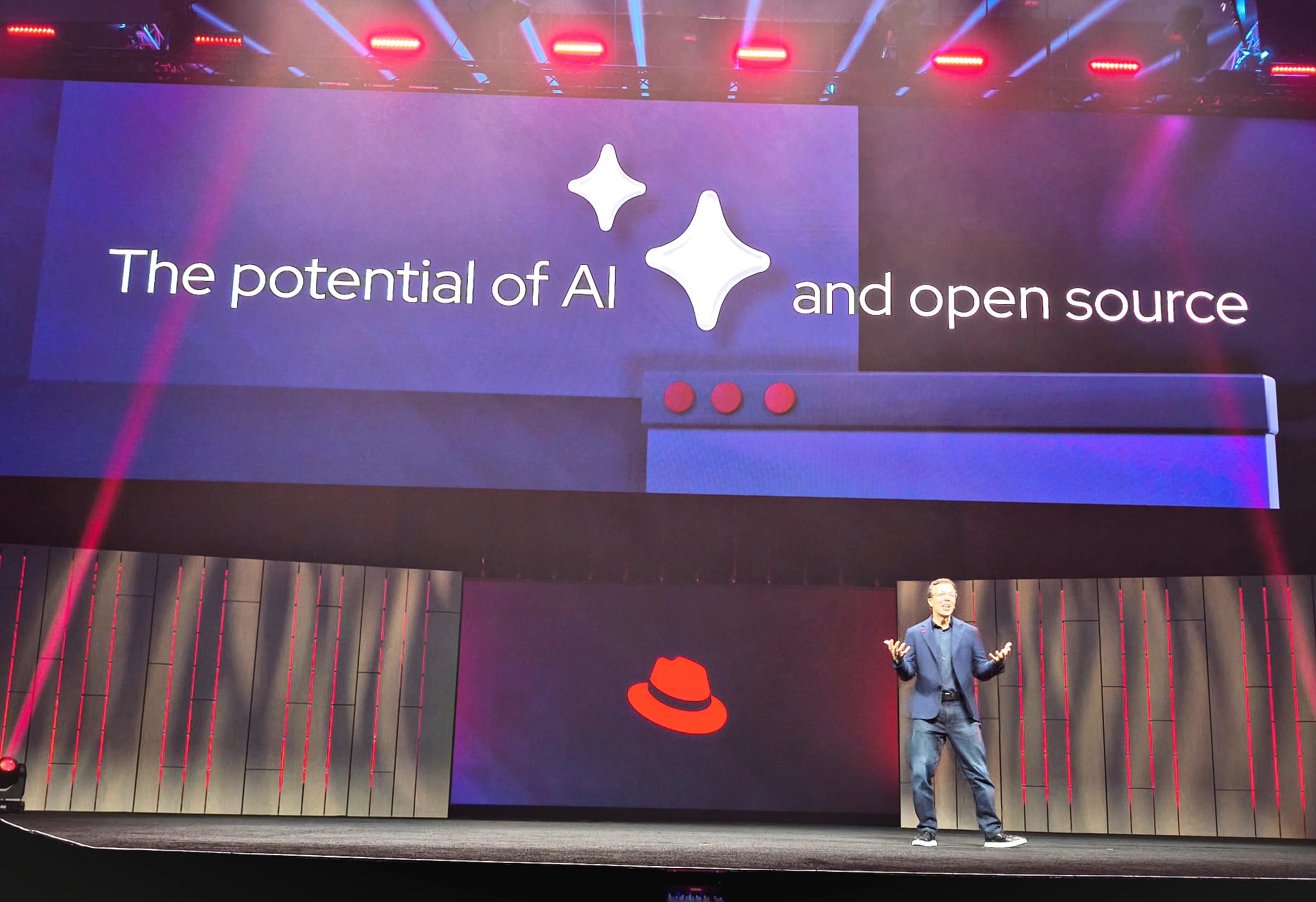RAD RHEL, Red Hat Advanced Developer Suite
Red Hat used its annual developer gathering this month to detail a new offering that combines platform engineering tools with enhanced security capabilities.
The company says it wants to help accelerate and simplify application development with enhancements to speed the adoption of Red Hat AI technologies.
Red Hat Advanced Developer Suite (written in full for now, but perhaps as RHADS later) is a new addition to Red Hat OpenShift, the company’s technology for hybrid cloud application management, orchestration and automation powered by Kubernetes.
We all know developer productivity and AI integration are top software engineering priorities. Magical analyst house Gartner thinks that increasing developer productivity and integrating AI are the two highest software engineering priorities.
Towards golden paths
The company used its announcement roster at Red Hat Summit 2025 this week in Boston to explain how Red Hat Advanced Developer Suite provides the tools for platform engineering and developer teams to collaborate on building “golden paths” today.
What are golden paths in software?
Red Hat says a golden path refers to an opinionated, well-documented and supported way of building and deploying software with a supported path, so that development teams are able to build more efficiently in ways that meet organisational standards.
We can talk about golden paths almost as a kind of software templates that provides infrastructure, application services, toolchains and best practice policies transparently, allowing developers to deliver more applications faster and with advanced security features.
Red Hat Advanced Developer Suite combines:
- Red Hat Developer Hub: an internal developer portal, built on Backstage (an open source framework for building developer portals) and an incubating project in the Cloud Native Computing Foundation. Red Hat Developer Hub now features an enhanced AI-centric user experience with pre-configured software templates for prevalent AI scenarios.
- Red Hat Trusted Profile Analyzer: provides management of an organisation’s software bill of materials (SBOMs), vulnerability exploitability exchanges (VEX) and common vulnerabilities and exposures (CVEs). It delivers risk intelligence to developers and DevSecOps teams.
- Red Hat Trusted Artifact Signer: offers a production-ready deployment of the Sigstore project, simplifying cryptographic signing and verification for software artifacts like container images, binaries and documents.
Red Hat Trusted Artifact Signer now extends its robust signing and verification capabilities to AI models packaged in OCI format, ensuring only trusted and signed models are deployed, bolstering security.
“Red Hat Advanced Developer Suite also integrates with a variety of supported tools and offerings including Red Hat OpenShift, enabling IT teams to use existing investments and further customise the solution. Through integration with Red Hat OpenShift Pipelines and Red Hat OpenShift GitOps as well as other leading CI/CD solutions, users can accelerate application delivery, automate testing for earlier bug detection and more,” said the company.
Users are also able to use integrations with Red Hat migration toolkit for applications, Podman Desktop and Red Hat IDE Plugins to improve developer velocity and make software development and migration faster and more seamless.
Additionally, Red Hat OpenShift Dev Spaces provide developers with a Cloud Development Environment (CDE) for instant developer and contractor onboarding and all the tooling, templates and security requirements built directly into their development environment.
Integrated software supply chain
By tightly integrating Red Hat Trusted Artifact Signer and Red Hat Trusted Profile Analyzer, Red Hat says IT departments can mitigate potential security vulnerabilities early and continuously throughout the software development lifecycle. These tools deliver an audit trail of all software development activities across environments, providing visibility and intelligence into the risk posture of the software supply chain.
Organisations gain a holistic solution to help developers move faster while adhering to stringent security and compliance demands. Red Hat Advanced Developer Suite integrates into organisations’ existing workflows and helps cut through the complexities associated with developing intelligent applications, enhancing the developer experience.
According to Red Hat, “Developers who want to create and maintain an application that integrates with large language models (LLMs) face a variety of challenges, including how to assimilate AI into their existing applications and software development practices. As AI becomes a strategic imperative in the business world, the ability to move faster to bring AI into applications will be key to remaining competitive. Red Hat AI Inference Server, RHEL AI and OpenShift AI are foundational solutions to help solve those problems. Increasing developer productivity with Red Hat Advanced Developer Suite in conjunction with Red Hat AI solutions accelerate the integration of AI into their daily development practices and delivered applications.”
Red Hat Advanced Developer Suite provides integrations with Red Hat AI Inference Server, RHEL AI and OpenShift AI that deliver security-focused AI-enabled applications as well as cloud-native applications, while simultaneously empowering platform engineers to govern, control and improve the security posture of AI-enabled applications running in hybrid and multi-cloud environments.
Red Hat Developer Hub ships with AI-focused software templates that use Red Hat AI solutions that consist of pre-architected and supported approaches to building and deploying AI-enabled services or components – without having to learn all the details of the technology used to implement it.
The templates enable organisations to get started developing applications for common AI use cases including: Chatbot, Audio to text, Object detection, code generation and Retrieval Augmented Generation (RAG).




